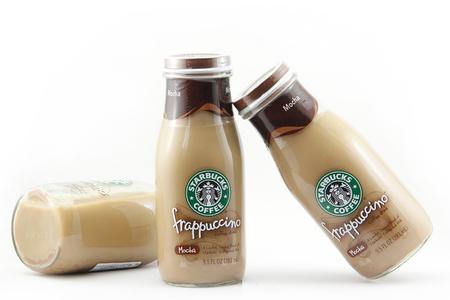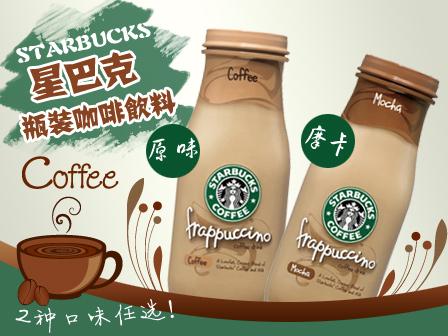How long can Starbucks 'high profits last in our country?

Recently, the Starbucks effect continues to rise, and Starbucks, a coffee culture cultivated in China, is an indispensable main body. Reports about Starbucks' high prices and profit margins as high as 32% in mainland China have aroused widespread discussion.
On the factual level, there are mainly the following two sets of data. First, the relevant data released by Starbucks for the second quarter of 2013 show that the operating profit margin in China / Asia-Pacific region is 32%, and that in America is 21.1%. The operating margin in Europe, the Middle East and Africa is only 1.9%.
Second, a recently released survey shows that Starbucks prices in Beijing are higher than those in Hong Kong, Tokyo, New York, London and other cities. Among them, the price of a coffee that sells for $3.81 in London is $4.81 in Beijing, which is 26% higher. In contrast, Beijing's per capita disposable income lags far behind these cities.

The figures by comparison are so harsh, while business discussions are filled with emotions and guesses.
In the face of questions from the media, Starbucks gave them an explanation to the relevant media for the following reasons: the cost theory, including employees' salaries and benefits, rent, and so on; pricing is based on the actual situation in different parts of the world; Asia-Pacific franchise stores often lead to financial statements showing high profits business model; and so on. The author notes that Starbucks is not completely consistent with different media.
These explanations have not been sufficiently recognized, and media reports such as CCTV have raised questions about the reliability of these explanations. At the same time, some so-called experts came out to support Starbucks, criticizing the media reports for "lack of financial common sense."
From a purely commercial point of view, as long as it is not illegal, there is nothing wrong with high prices and high profit margins. It can even be said that this is the "skill" of an enterprise, even though it smacks of primitive capitalism.

In this regard, Ren Jing, director of the Press and Public Affairs Department of the China Consumer Association, gave a rational voice to the relevant media. Starbucks' product pricing belongs to the category of complete market competition, and there is no fraud such as concealing price information, and it does not involve the public interest. therefore, there is no illegal behavior from the perspective of the Price Law. However, consumers'"blind obedience" to brand effect due to information asymmetry in the process of consumption should not be encouraged.
It is not difficult to understand that Starbucks is able to achieve such high profit margins in mainland China, and it is even a common business phenomenon that consumers "blindly follow" the brand. For an emerging market like China, in addition to Starbucks, European and American mainstream brands such as cars, clothing, cosmetics and so on have made high profits.
High profit margins have driven Starbucks' rapid expansion in mainland China. Starbucks has opened about 1000 stores in mainland China, making it the world's second-largest market after the United States by 2014, and plans to operate 1500 stores in mainland China by 2015, according to the Starbucks China website.
However, in addition to corporate profits, there is another side of the coin in the business world-consumer welfare. A sustainable business is only if there is a balance between corporate profits and consumer welfare. Any high profits that ignore and ignore the interests of consumers will not be sustainable for a long time.
The Chinese market in many areas, such as luxury cars, was once ridiculed as "stupid, rich and quick", and today's chain coffee market has the same taste. For example, in this discussion of Starbucks'"profiteering", there is a voice that "as long as someone buys it, it is a skill to sell a cup of coffee for 100 yuan." The author noticed that, in addition to Starbucks, COSTA from the United Kingdom, Korea's Man Coffee and so on have increased their efforts to expand in mainland China.
For consumers, it is good news for other competitors to join the game. Market competition is the best way to form market average profit margin. In a fully competitive market, the forerunners can make short-term high profits, but with the addition of new competitors, prices will fall, and the overall market will eventually form an average profit margin, unless there is a monopoly. Therefore, only by competition can consumers have more cost-effective consumption opportunities.
More importantly, as Chinese consumers become familiar with coffee drinks and cafe culture, the brand "blind obedience" will gradually disappear, and the premium based on this "blind obedience" will not be sustainable. At that time, Starbucks may no longer be one of the "petty bourgeoisie" places for Chinese people to take care of their children, surf the Internet, or even do business.
Based on the above economic and business logic, the editor believes that with the intensification of competition and the maturity of the market, Starbucks' high profits of more than 30% in mainland China will be unsustainable. At present, the sales volume of Starbucks coffee drinks mainly comes from the promotion of price reduction. If sold at the original price, only a small number of consumers can accept it. It is worth mentioning that even with the promotion of price reduction, the price of each bottle of Starbucks coffee drink is also as high as 15 yuan per bottle, which is also higher than that of other coffee drinks.
For Starbucks, what needs to be considered at the moment is how to maintain this high profit margin for as long as possible without losing the trust of consumers; second, how to maintain its leading position in the fully competitive chain coffee market in mainland China in the future, so as to obtain profit margins slightly higher than the industry average. In this process, only continuous innovation, constantly according to social changes and consumer needs to improve and upgrade their own service quality, rather than obsessed with the use of consumer emotions.
Important Notice :
前街咖啡 FrontStreet Coffee has moved to new addredd:
FrontStreet Coffee Address: 315,Donghua East Road,GuangZhou
Tel:020 38364473
- Prev

Beverage choices should not be careless. Many kinds of drinks should be kept away.
Stepping into the 21st century, beverages have become a necessary fast consumer product for people to travel. Beverages are more popular than cold boiled water. In fact, there are several kinds of beverages that should be consumed less. The following Roebuck Coffee editor introduces some unhealthy beverages. Beverage choices should not be careless. Many kinds of drinks should stay away from 1. Carbonated drinks: the obesity problem caused by carbonated drinks is well known and contains caffeine
- Next

The eight most common misunderstandings about coffee
I think many friends of the older generation will be a little biased in their interpretation of coffee, thinking that drinking coffee is not good for their health, even harmful. The following editor aims at several coffee misunderstandings that are easy to produce in ordinary times to scientifically refute rumors. [misunderstanding 1 Coffee can cause insomnia] most people drinking coffee six hours before going to bed will not affect sleep. However, based on the metabolism of each person,
Related
- Detailed explanation of Jadeite planting Land in Panamanian Jadeite Manor introduction to the grading system of Jadeite competitive bidding, Red bid, Green bid and Rose Summer
- Story of Coffee planting in Brenka region of Costa Rica Stonehenge Manor anaerobic heavy honey treatment of flavor mouth
- What's on the barrel of Blue Mountain Coffee beans?
- Can American coffee also pull flowers? How to use hot American style to pull out a good-looking pattern?
- Can you make a cold extract with coffee beans? What is the right proportion for cold-extracted coffee formula?
- Indonesian PWN Gold Mandrine Coffee Origin Features Flavor How to Chong? Mandolin coffee is American.
- A brief introduction to the flavor characteristics of Brazilian yellow bourbon coffee beans
- What is the effect of different water quality on the flavor of cold-extracted coffee? What kind of water is best for brewing coffee?
- Why do you think of Rose Summer whenever you mention Panamanian coffee?
- Introduction to the characteristics of authentic blue mountain coffee bean producing areas? What is the CIB Coffee Authority in Jamaica?

